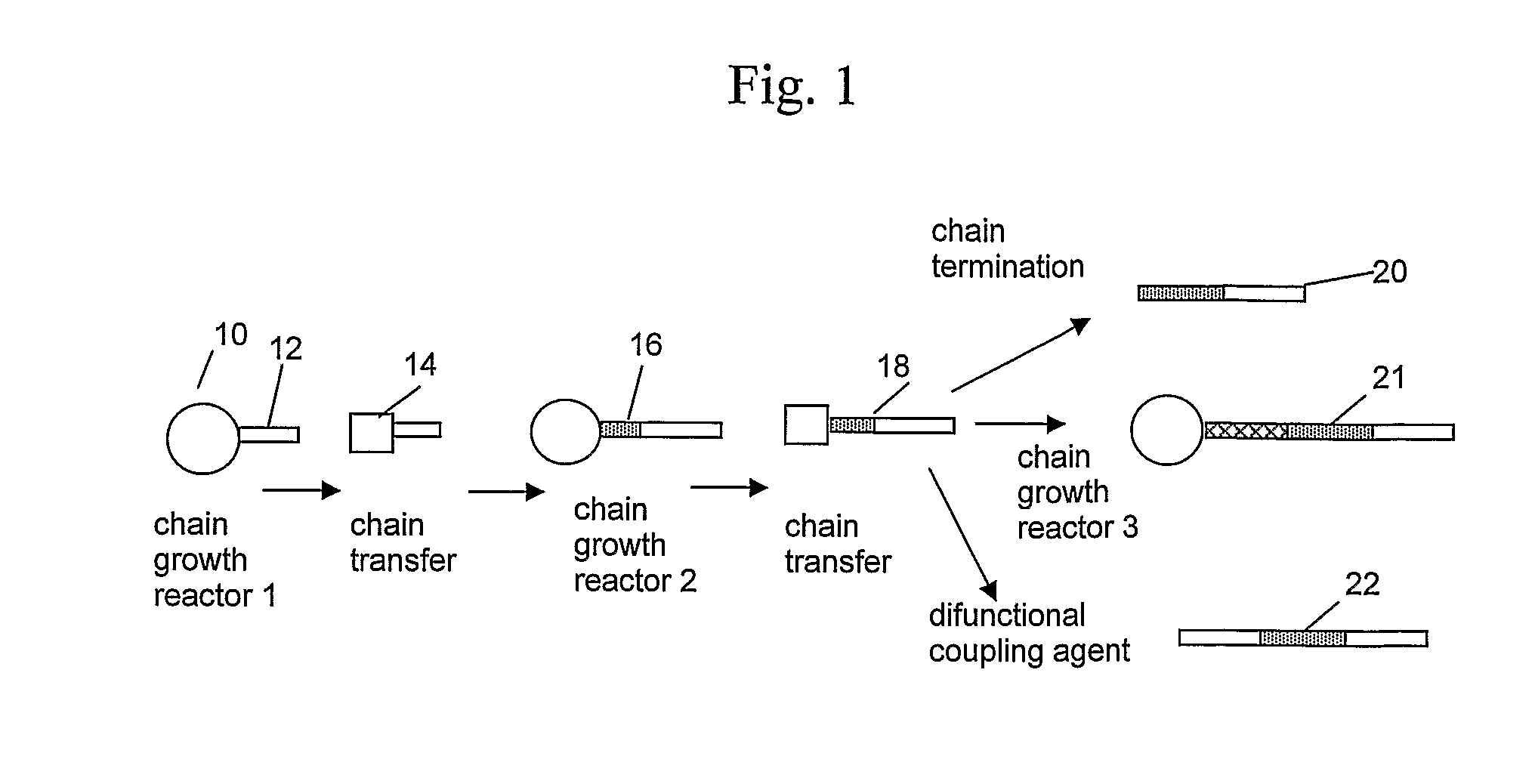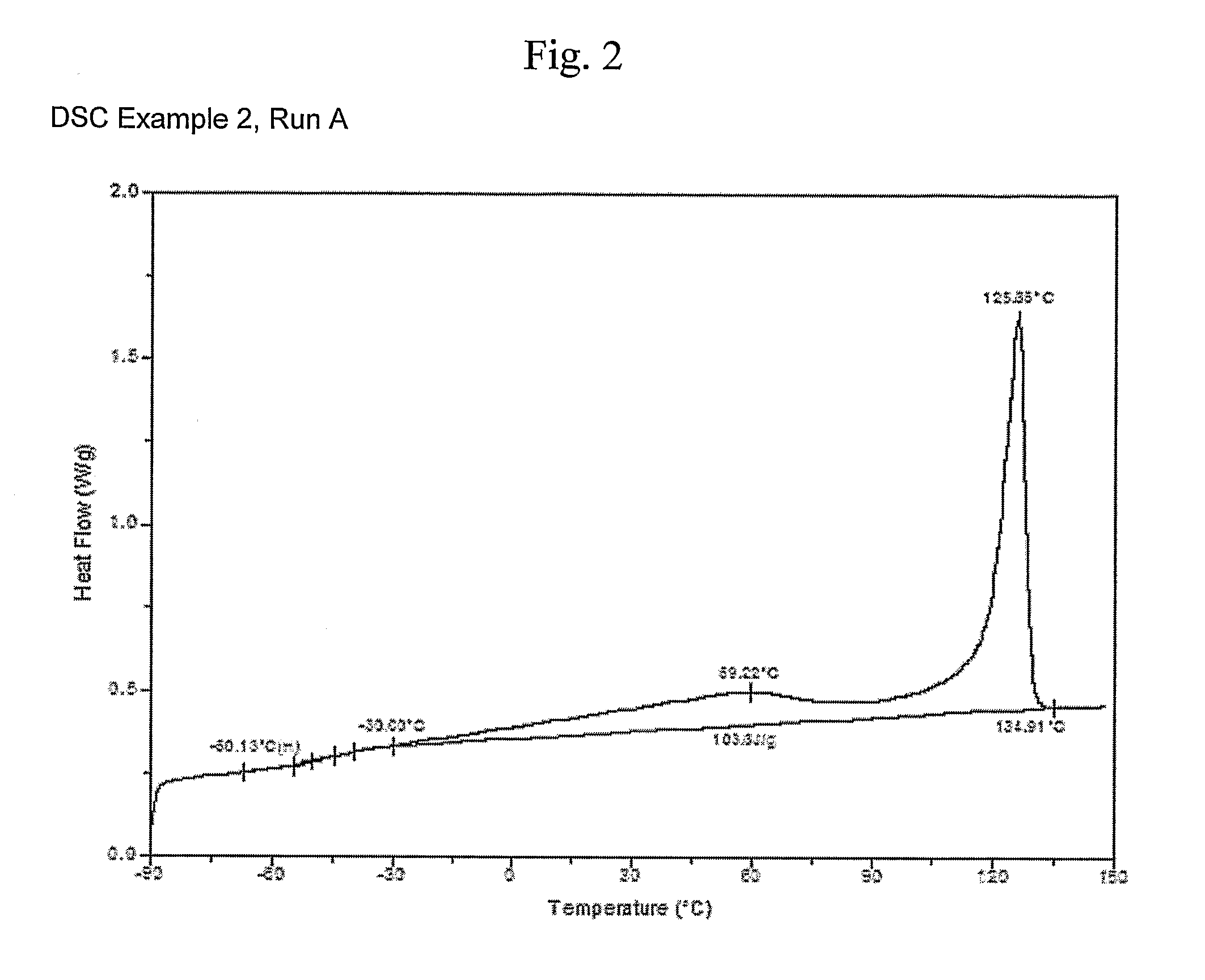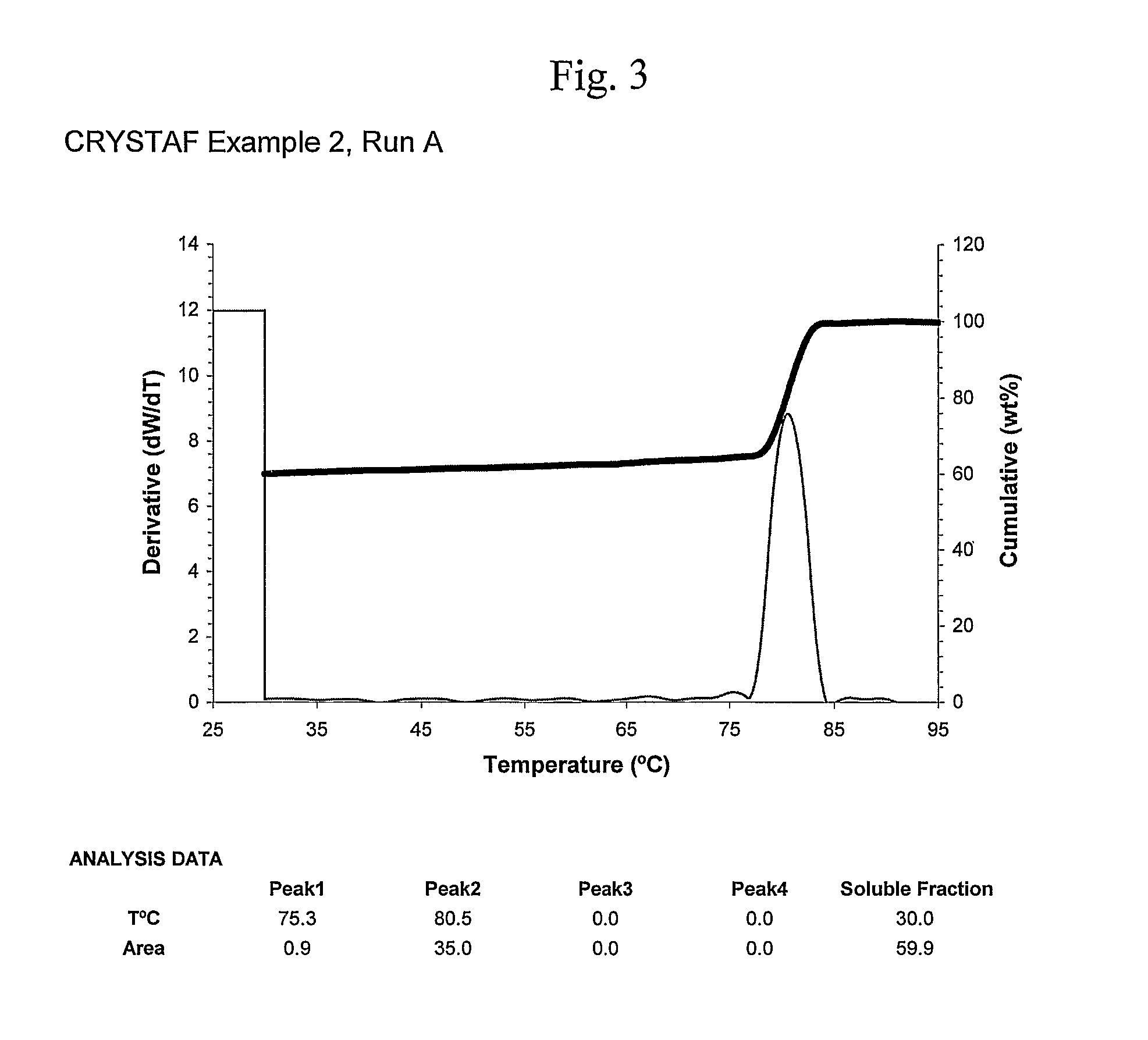Catalytic olefin block copolymers with controlled block sequence distribution
a technology of catalytic olefin and copolymer, which is applied in the field of catalytic olefin block copolymer with controlled block sequence distribution, can solve the problems of poor process economics, limited catalyst productivity, and inability to adapt readily, and achieves the effect of high tacticity or crystallinity
- Summary
- Abstract
- Description
- Claims
- Application Information
AI Technical Summary
Benefits of technology
Problems solved by technology
Method used
Image
Examples
specific embodiments
[0658]The following specific embodiments of the invention and combinations thereof are especially desirable and hereby delineated in order to provide detailed disclosure for the appended claims.
[0659]1. A process for the polymerization of one or more addition polymerizable monomers, preferably of two or more addition polymerizable monomers, especially ethylene and at least one copolymerizable comonomer, propylene and at least one copolymerizable comonomer having from 4 to 20 carbons, or 4-methyl-1-pentene and at least one different copolymerizable comonomer having from 4 to 20 carbons, to form a copolymer comprising two regions or segments of differentiated polymer composition or properties, especially regions comprising differing comonomer incorporation index, said process comprising:
[0660]1) contacting an addition polymerizable monomer or mixture of monomers under addition polymerization conditions, preferably uniform or homogeneous polymerization conditions, in a reactor or react...
example 1
Continuous Solution Polymerization Reactions
[0725]Polymer samples according to the invention and comparative polymer example are prepared in two well mixed, solution reactors, connected in series. The reactors are loop reactors providing reagents (Catalyst A-1, Cocatalyst 1, and shuttling agent SA1), as well as polymer are dissolved in the solvent during the polymerization process in the first reactor and continuously transferred to the second reactor for continued polymerization. Product is continuously removed from the second reactor, the catalyst system deactivated, and the polymer recovered by devolatilization. Recovered solvent / monomer mixture is condensed, purified, and recycled to both reactors. Suitable reactors and operating conditions for use herein are disclosed in U.S. Pat. No. 6,355,741, 5,977,251 or 5,684,097.
[0726]For the comparative examples, no chain shuttling agent (SA) is employed resulting in the formation of blends of polymers having differing levels of crystall...
example 2
Continuous Solution Polymerization Reactions
[0730]Ethylene / 1-octene copolymers are prepared using two continuous stirred tank reactors (CSTR) connected in series. Each reactor is hydraulically full and set to operate at steady state conditions. The shuttling agent (SA1) is added to the first reactor along with catalyst A-1, Cocatalyst 1, a scavenger (triisobutylaluminum modified methylalumoxane MMAO, available from Akzo-Noble, Inc.), and solvent (mixed alkanes (Isopar™ E, available from ExxonMobil Chemicals, Inc.). Operating conditions for the two reactors are provided in Tables 5 and 6. Polymer properties are provided in Table 7 and in FIGS. 2-9.
[0731]
TABLE 5Process Conditions First CSTR Reactor.Cat. A-1Cat. A-1Cocat.CocatMMAOMMAOSA12SA1Solv.C2H4C8H16H2TConc.FlowConc.FlowConcFlowConcFlowR-1Runkg / hrkg / hrkg / hrSccm1° C.ppm Hfkg / hrppmkg / hrppm Alkg / hrppm Znkg / hrConv.4Split5A*12.01.420.031501309320.2617090.311230.2750088.732111.5″0.050125″0.08″0.09″0135000.14191.0″*comparative, not an ex...
PUM
| Property | Measurement | Unit |
|---|---|---|
| Polydispersity Index | aaaaa | aaaaa |
| molecular weight distribution | aaaaa | aaaaa |
| molecular weight distribution | aaaaa | aaaaa |
Abstract
Description
Claims
Application Information
 Login to View More
Login to View More - R&D
- Intellectual Property
- Life Sciences
- Materials
- Tech Scout
- Unparalleled Data Quality
- Higher Quality Content
- 60% Fewer Hallucinations
Browse by: Latest US Patents, China's latest patents, Technical Efficacy Thesaurus, Application Domain, Technology Topic, Popular Technical Reports.
© 2025 PatSnap. All rights reserved.Legal|Privacy policy|Modern Slavery Act Transparency Statement|Sitemap|About US| Contact US: help@patsnap.com



